VES in partnership with AMD concluded the event titled “The Making of” at Fun Republic Cinema (Zee Preview Theatre) on 30 March 2019.
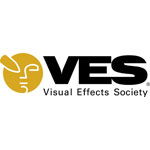
It ushered a platform for international speakers and local partners to discuss various aspects of technology and VFX industry with regards to how some of the most awe-inspiring imagery was created on celluloid.
The event started off with a welcome address and a brief introduction to the VES (Visual effects society) which has played a catalysing role in replenishing the VFX scenario all over the world.
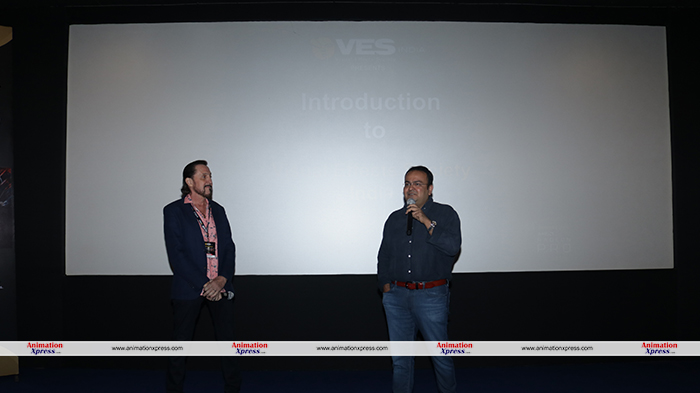
AMD showcased their top-notch technologies, products and services for the VFX and 3D animation industry.
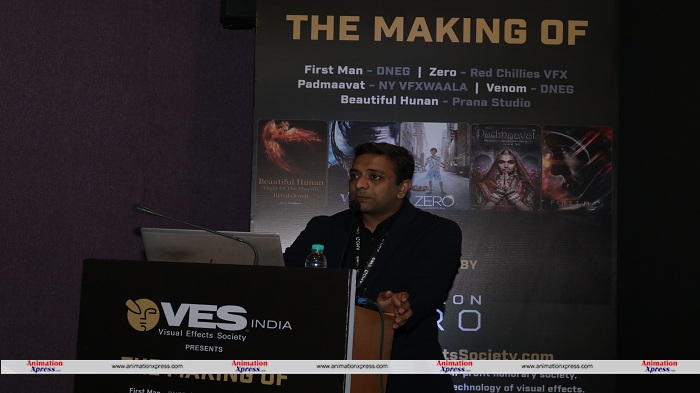
AMD Business Development Manager (Radeon Pro Graphics) Manmit Desai
 The presentation put the limelight on some of the latest technologies of the market-leading toolsets and the state-of-the-art hardware being developed to overcome future technological challenges.
The presentation put the limelight on some of the latest technologies of the market-leading toolsets and the state-of-the-art hardware being developed to overcome future technological challenges.
Highlights being how AMD Radeon™ Pro graphics cards are designed for creative professionals and optimised for open source software, media and entertainment which is gearing up to expedite the industry processes and setting new benchmarks in the way processing and rendering is done.
Enlightening the attendees with the technological nuances that went into the deployment of the best imagery created on celluloid across the world, the event saw an unprecedented convergence of some of the top industry veterans, artists and VFX technicians of some the most groundbreaking VFX projects including the Oscar-winning movie First Man.
Students from VFX institutes as well as working professionals from VFX and animation studios thronged the venue.
NYVFXWAALA
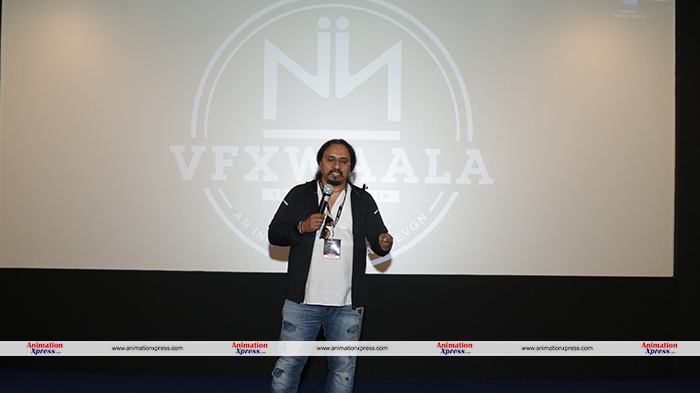
Demonstrating the VFX breakdown of the Padmaavat, NY VFXWAALA VFX supervisor Prasad Sutar explained, “The standard has risen over the years to a point that I don’t get asked if it’s going to be ‘Hollywood-like’. People have come around to the fact that India can deliver the shots. We keep on improving the way we can deliver and the way we can help the script to be executed in a better way. We keep on improving the way in which films can be made within the limited budget. What’s changed is that things that VFX supervisors are involved in the process now right from the beginning. I get to read the scripts.”
He chuckled over the shift in the scenario of location-shooting almost becoming erased with the advancements of chroma screen techniques.
Having shared his insights about the process starting from previz (Pre-visualisation) to rendering, he answered the pressing question of the limited budgets, “I am more a part of the production side than the VFX side despite owning a VFX studio and struggling with the 31st March budgets and balance sheets. The reality is that a Hindi movie will never get a Hollywood-budget. You have to accept it. Purely because of the audience size. The day the audience goes up, the budget will definitely go up. Till then you need to work your way around these limitations”
Double Negative
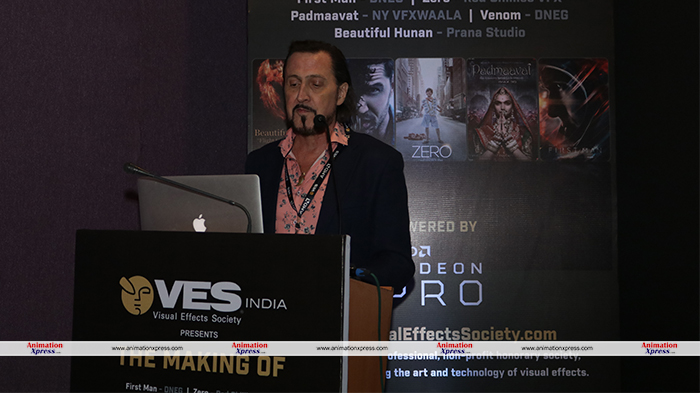
Shedding light on the techniques ingeniously employed to recreate mankind’s giant leap and the Apollo Space mission in the Oscar-winning movie First Man, DNEG Oscar-winning VFX supervisor Tim McGovern shared, “Part of our process was to ramp up the slow-motion archival footage, clean it up, remove scratches, take out all the additional grain as you can see the footage is old, and make it as screen-worthy as possible. Once we passed that particular stage, we would bring it down so that it fits with the 16 millimetre and 35-millimetre footage of everything else surrounding it.”
Alluding to the inventive method of bucking the green-screen-trend, Mcgovern shared that they actually created it with an intersection of miniatures, archival footage, traditional digital effects, and giant ‘LED screens to recreate the Apollo 11 mission.
Prana Studios
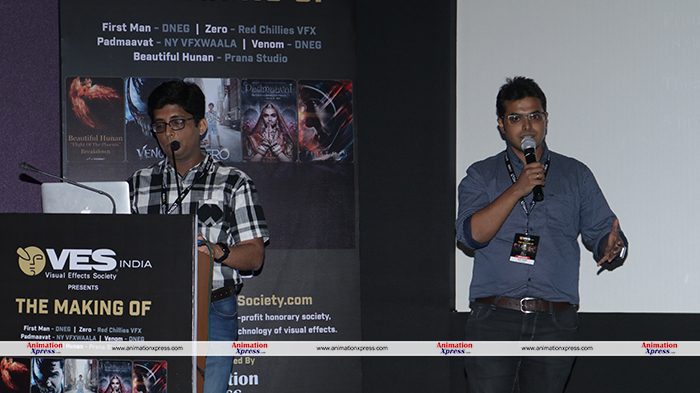
Enlarging on the VFX complexities of Beautiful Hunan (also nominated for the VES award), Prana Studios Veterans Suhit Saha and BR Rajeev discussed their approach as to how they created the immersive experience. The veterans took the viewers through the process of how they created the exhilarating journey across Hunan, showcasing the wondrous and historical locations.
Redchillies.vfx
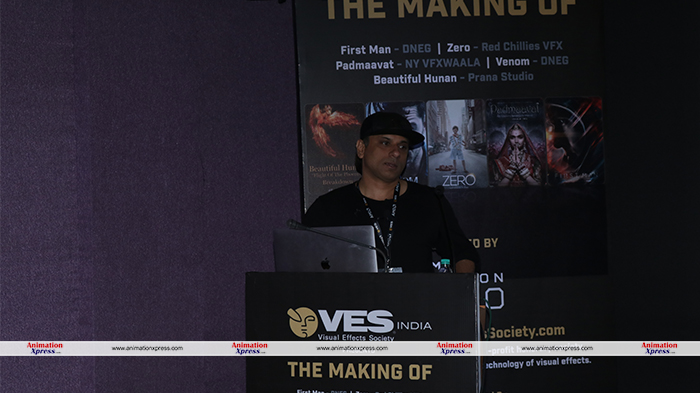
Highlighting the techniques deployed to create the groundbreaking imagery ranging from how they shrank the superstar into a dwarf to colour grading the sequences, redchillies.vfx VFX veteran and senior supervisor Harry Hingorani shared, “we didn’t want to go down the path of face replacement as the audiences are very smart these days and they would’ve figured it out. Having been in the industry for over 25 years, everyone recognizes SRK’s mannerism and behaviour. Thus, we decided to shoot every scene with SRK though, we had a body double, strictly for reference. We had 1600 artists working on this movie, 600 being only from our studio. The reason we had a body double was for reference to give the outsourced studios. Every shot was taken five times: First was the master take, second then the pit shots. The third plate was the cover the background /foreground with people, and the final shot was a clean plate in case we missed something and required replacement/cleanup. And finally the chrome ball, which captures 360 degrees of lighting set up and post-production. we could re-simulate the lighting effects to ensure it all looks believable and real. How we made it all look real. In the last plate (regeneration plate) SRK would act keeping his arms stretched out”
He also highlighted the importance of Technodolly that helped ease the filming process a whole lot more.
Double Negative

With a scene by scene VFX breakdown of some of the most bafflingly complex imagery delivered in the movie Venom, DNEG’s (Double Negative) VFX supervisor Jaykar Arudra also spilled the beans on the approaches and the techniques, “We were told that we have to be ready to use a lot of goo effects. Released in October 2018, Venom had a count of approximately 1000 shots to be delivered between London, Montreal, Vancouver and Mumbai along with Chennai. So when the film came to us, the first question was how to work around with the look of Venom, Venom as a character is inspired by a Gorilla. India itself was responsible for delivering approximately 200 shots. It has to look very human and organic. Expressions had to be animated with the help of the link between mouth, teeth and eyes. So the anatomy of a human being had to be incorporated to make it more relatable and emotive.”
With a resounding vote of thanks by media veteran and CEO of AnimationXpress Anil Wanwari to all the speakers and students present in the audience, the event ended on a jubilant and promissory note.
